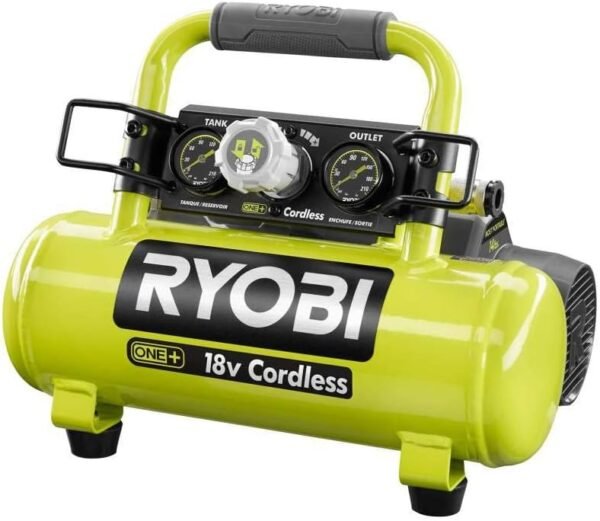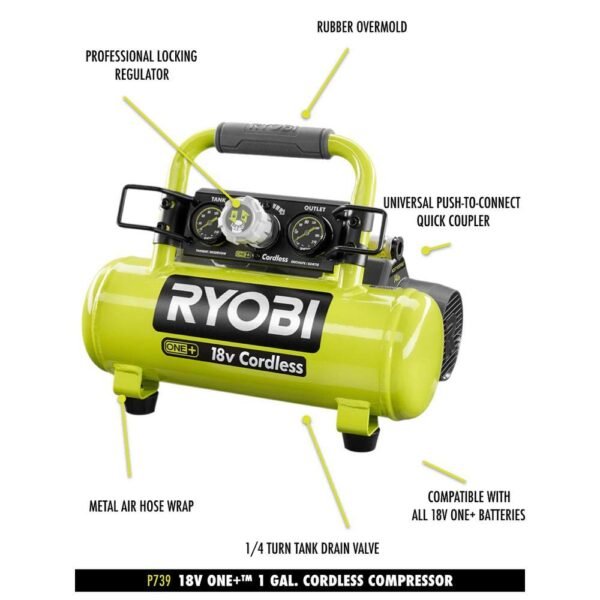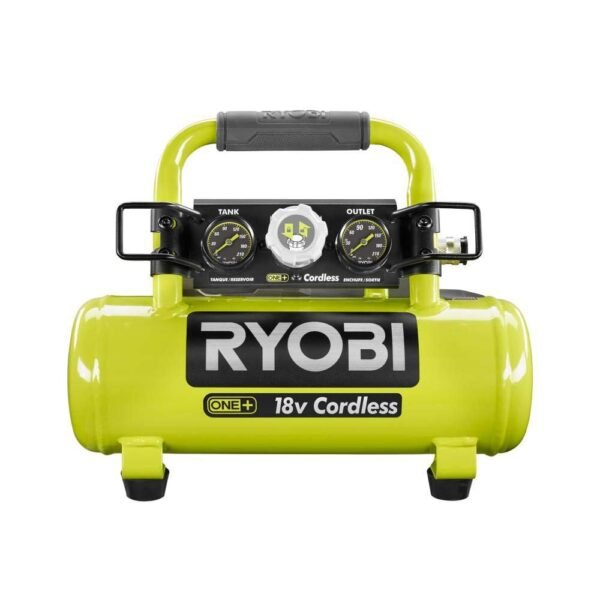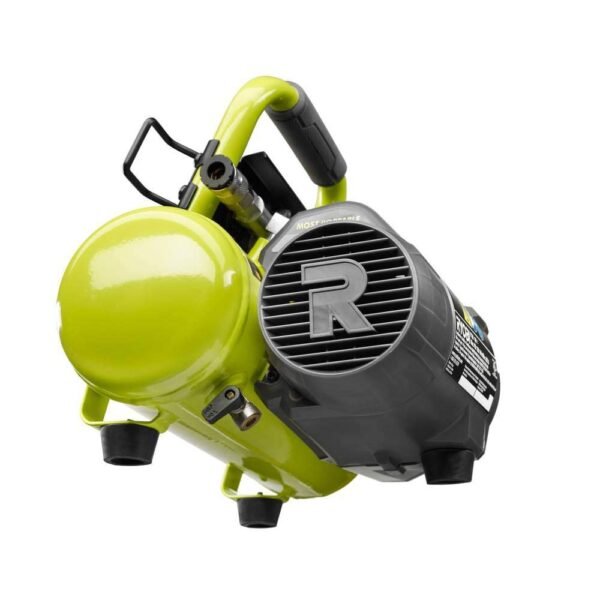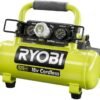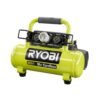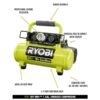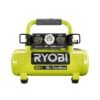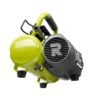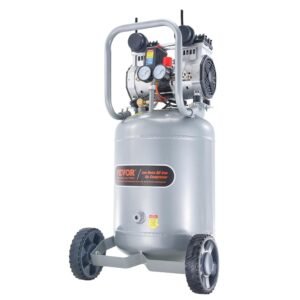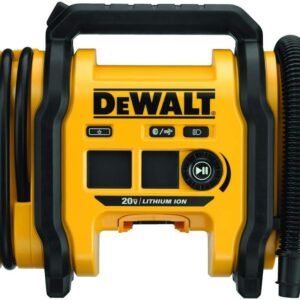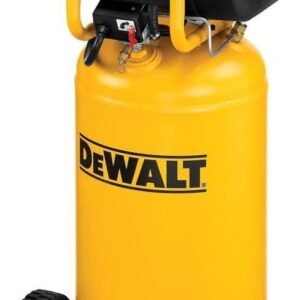RYOBI ONE+ Portable Air Compressor Review Cordless 18V Tire Inflation Power Tool
RYOBI ONE+ Portable Air Compressor Review Cordless 18V Tire Inflation Power Tool
- Cordless design provides exceptional portability, enabling use in various locations without being tethered to an outlet.
- The compressor reaches up to 120 PSI, making it highly effective for tire inflation and other pneumatic tool applications.
- Compact and lightweight, it is easy to carry around and store, ideal for roadside emergencies or quick jobs.
- Integrates seamlessly with the RYOBI ONE+ battery system, allowing compatibility with over 260 tools for versatile use.
As an Amazon Associate I earn from qualifying purchases.
Description
Strong Points of the RYOBI 18V ONE+ 1 Gallon Air Compressor
Using the RYOBI 18V ONE+ 1 Gallon air compressor has been an interesting experience, especially as someone who values tools that combine portability and power. The cordless design truly makes a difference—no more hunting for power outlets or dealing with tangled cords. This feature alone turns it into a genuinely portable powerhouse for roadside tire inflation or quick pneumatic nailer jobs. The locking regulator is a nifty addition, too. It keeps the pressure exactly where you set it, preventing those annoying fluctuations that can mess up your work or inflate tires incorrectly. The 1-gallon tank strikes a practical balance, making it compact yet capable enough for most home and light professional tasks.
- Cordless operation offers excellent mobility and convenience.
- The pressure stays consistent thanks to the professional locking regulator.
- Compact size with a 1-gallon tank makes it easy to store and transport.
Drawbacks to Keep in Mind
Although the compressor performs well in many areas, a few things stood out as less than ideal during testing. The battery and charger are sold separately, which can catch some off guard if they expect a ready-to-go package. At just 18 volts, this unit isn’t designed to replace heavy-duty compressors; it’s best suited for small tasks and quick fixes rather than continuous or industrial use. The 15-foot hose is decent but sometimes feels a bit short when working on larger vehicles or projects that require more distance. Additionally, the compressor weighs 14 pounds, which is manageable but not exactly featherlight for carrying around all day.
- Battery and charger not included, meaning additional upfront investment.
- Limited power output compared to larger compressors—best for light-duty tasks.
- Hose length may restrict reach in some scenarios.
- Weighs 14 pounds, which could be cumbersome for extended portability.
Versatile Features and Settings Tested
Exploring every feature of this portable air compressor revealed some user-friendly design choices. The locking regulator is a standout, allowing me to set the desired PSI (up to 120 max) and walk away without constantly monitoring pressure. The cordless power source means no tangles or restrictions, perfect for roadside emergencies or finishing nail projects in the backyard. The unit’s compatibility with the RYOBI ONE+ system is a smart move; I can swap batteries with other tools like drills and saws, streamlining my toolkit significantly. The green color and compact 13.5″ x 11.5″ x 10″ dimensions make it visually distinct yet space-efficient. However, I noticed the compressor takes a bit longer to reach max pressure compared to plug-in models, which might slow down heavy workloads.
Usability and Portability in Real-Life Scenarios
Handling this compressor outside the workshop was surprisingly convenient. I used it to inflate my car tires after a long drive, and the cordless setup allowed me to work in the driveway without dragging extension cords. My neighbor even borrowed it to power a pneumatic finish nailer for some deck repairs, appreciating the quick setup and freedom from tangled cables. The 15-foot hose was generally sufficient for car tires and small inflations but felt limiting during some fence-building tasks. Carrying the compressor around for longer periods was doable but not effortless due to its 14-pound weight. Still, it’s a major upgrade from traditional bulky compressors, especially for casual or emergency use.
Comparative Look at Competing Brands
Comparing this portable compressor to competitors like the DEWALT DCC020IB and the Makita MAC2400 highlights some interesting trade-offs. The DEWALT offers slightly higher pressure and faster inflation but at a higher price and with less battery compatibility across tools. The Makita model is known for its durability and industrial strength but sacrifices portability and cordless convenience. This unit shines in the battery platform versatility and cordless convenience, making it ideal for those already invested in the RYOBI ONE+ ecosystem. However, if raw power and speed are priorities, heavier wired compressors might be a better fit.
Financial Value and Investment Considerations
In terms of price to quality ratio, this air compressor offers solid value if you already own RYOBI ONE+ batteries. The absence of a battery and charger means an initial extra cost if starting from scratch, but the ability to share power sources among multiple tools evens that out. For users seeking a budget-friendly, portable compressor for light inflation and pneumatic tool use, it’s a smart spending choice. Its 3-year warranty adds peace of mind, reinforcing confidence in its build quality. That said, if serious air compression power is needed regularly, investing in a larger, corded model might provide more bang for the buck.
Design and Build: Balancing Portability with Functionality
The overall design feels well thought out, blending compactness with a sturdy build. The green casing is typical RYOBI but offers decent durability against drops and bumps. The 1-gallon tank is small yet sufficient for tire inflation and intermittent nailing jobs. I appreciated the built-in handle, which makes carrying easier, though the compressor’s weight makes longer hauls tiring. Controls are straightforward, with the locking regulator dial easy to adjust and a clear pressure gauge for monitoring. The unit doesn’t produce excessive noise, which is a bonus for neighborhood use, but it’s not whisper quiet either.
Suitability for Different Users and Applications
This compact air compressor fits perfectly in the kit of DIY enthusiasts, homeowners, and light contractors who need quick inflation or cordless pneumatic tool power without hauling heavy gear. It’s especially advantageous for those already embedded in the RYOBI ONE+ battery ecosystem, offering seamless integration. Families with kids who occasionally need bike tire inflation or small inflatables will find it practical. However, professionals relying on continuous or heavy-duty air compression might find it lacking in sustained power and tank capacity. Overall, it suits anyone valuing mobility, ease of use, and moderate performance over raw output.
This review reflects my hands-on experience with the RYOBI 18V ONE+ 1 Gallon air compressor, backed by insights gathered from fellow users. Its cordless freedom, consistent pressure control, and compact design stand out as major strengths, while limited battery inclusion, moderate power, and hose length are worth considering. Depending on your needs and tool ecosystem, it could be either a fantastic addition or a modest backup unit for quick jobs.
Additional information
| Brand | RYOBI |
|---|---|
| Voltage | 18 Volts |
| Recommended Uses For Product | Tire Inflation |
| Power Source | Battery Powered |
| Special Feature | Portable, Cordless |
| Included Components | Battery |
| Capacity | 1 Gallons |
| Color | Green |
| Product Dimensions | 13.5"L x 11.5"W x 10"H |
| Style | Portable |
| Model Name | ONE+ |
| Hose Length | 15 Feet |
| Tank Volume | 1 Gallons |
| Manufacturer | RYOBI Tools |
| UPC | 033287175796 033287185986 |
| Part Number | P739 |
| Item Weight | 14 pounds |
| Item model number | P739 |
| Is Discontinued By Manufacturer | No |
| Item Package Quantity | 1 |
| Special Features | Portable, Cordless |
| Batteries Included | No |
| Batteries Required | Yes |
| Warranty Description | 3 Year Tool Warranty |
| Date First Available | January 17, 2019 |
